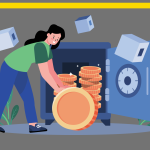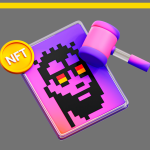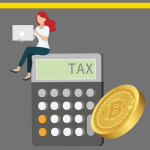Decentralized Finance, or DeFi, has been one of the hottest topics in the cryptocurrency space for the past few years. But what does the future hold for this revolutionary financial ecosystem, and how will it continue to shape the world of cryptocurrencies? In this article, we’ll dive deep into what DeFi is, how it works, and what we can expect from it in the coming years.
What is Decentralized Finance (DeFi)?
DeFi, short for Decentralized Finance, refers to a financial system built on blockchain technology that operates without traditional intermediaries like banks or financial institutions. It aims to create an open, transparent, and accessible financial ecosystem that allows users to lend, borrow, trade, and earn interest directly from their crypto assets.
Unlike traditional finance, which relies on centralized entities to manage transactions and control access, DeFi is powered by smart contracts — self-executing agreements with the terms directly written into code. This decentralized nature makes DeFi a game-changer for global finance.
Key Components of DeFi
DeFi is composed of various components that work together to offer a wide range of financial services. Let’s break down some of the key elements that make up the DeFi ecosystem:
Smart Contracts
At the heart of DeFi are smart contracts. These are automated digital contracts that execute when specific conditions are met. Think of them as the digital equivalent of a vending machine; you put in a coin (input), and you get a snack (output) without needing a shopkeeper to facilitate the transaction. Smart contracts eliminate the need for intermediaries, ensuring that transactions are both fast and transparent.
Decentralized Exchanges (DEXs)
Decentralized Exchanges (DEXs) are platforms that allow users to trade cryptocurrencies directly with each other without relying on a centralized exchange. DEXs leverage blockchain technology to offer a more secure and private trading experience. Unlike centralized exchanges, where your funds are stored on the platform, DEXs keep your assets in your wallet, giving you full control over your holdings.
Lending and Borrowing Platforms
DeFi lending and borrowing platforms are revolutionizing the way we think about loans and credit. Unlike traditional financial institutions, these platforms enable users to lend their assets to others or borrow against their crypto holdings without needing a credit score. Interest rates are determined by supply and demand, and transactions are governed by smart contracts, ensuring transparency and security.
The Evolution of DeFi: A Quick History
To understand where DeFi is heading, it’s essential to take a look at how it all began and the significant milestones that have shaped its journey.
Early Beginnings of DeFi
DeFi’s roots can be traced back to the launch of Bitcoin in 2009, which introduced the concept of decentralized digital money. However, DeFi truly began to take shape with the launch of Ethereum in 2015, which brought smart contracts into the picture. Early projects like MakerDAO and Compound paved the way for the first decentralized lending platforms.
Major Developments in DeFi
Since those early days, DeFi has evolved rapidly. 2017’s ICO boom brought attention to a wide range of new projects, but it wasn’t until 2020’s “DeFi Summer” that decentralized finance truly took off. This period saw an explosion of innovation, with projects like Uniswap, Aave, and Yearn.Finance leading the charge in creating decentralized exchanges, yield farming, and liquidity mining protocols.
The Future of DeFi: Trends to Watch
As DeFi continues to grow, several trends are emerging that could shape its future. Let’s explore some of these key trends:
Cross-Chain Compatibility
One of the most exciting trends in DeFi is cross-chain compatibility. Currently, most DeFi projects are built on the Ethereum blockchain, but this is starting to change. New technologies are enabling interoperability between different blockchains, which will allow DeFi platforms to tap into a broader pool of assets and users, enhancing liquidity and utility.
Layer 2 Solutions
Scalability has been a challenge for DeFi, particularly on the Ethereum network, where high gas fees can deter smaller investors. Layer 2 solutions, like Optimistic Rollups and zk-Rollups, are designed to address these scalability issues by processing transactions off-chain and settling them on-chain. This will help reduce costs and improve transaction speeds, making DeFi more accessible.
Regulatory Challenges and Opportunities
As DeFi grows, it is attracting the attention of regulators worldwide. While this poses some challenges, it also presents opportunities for DeFi platforms to legitimize and gain broader acceptance. Navigating the regulatory landscape will be crucial for DeFi’s continued growth, and we may see more collaboration between regulators and DeFi developers to create a sustainable future.
The Impact of DeFi on Cryptocurrencies
DeFi’s rise is having a profound impact on the broader cryptocurrency market. Here are some of the ways DeFi is influencing the crypto world:
Increased Liquidity and Adoption
DeFi platforms are bringing more liquidity to the crypto market by providing new opportunities for users to earn and invest. Yield farming, staking, and lending are drawing more people into the ecosystem, thereby increasing demand for various cryptocurrencies.
Enhanced Innovation
DeFi is fostering innovation within the crypto space by introducing new financial instruments and models. From flash loans to synthetic assets, DeFi projects are pushing the boundaries of what’s possible, leading to a more dynamic and evolving market.
Market Volatility and Risks
However, with great innovation comes great risk. DeFi projects, particularly those that are new and untested, can be highly volatile and susceptible to hacks and exploits. Investors must be aware of these risks and take steps to protect their assets.
Conclusion
The future of DeFi is incredibly promising, with its potential to revolutionize traditional financial systems and empower individuals with greater financial freedom. As it evolves, DeFi will continue to drive innovation and shape the cryptocurrency market, presenting both opportunities and challenges. While the road ahead is uncertain, one thing is clear: DeFi is here to stay, and its impact on the world of finance will be profound.
FAQs
- What is the primary benefit of DeFi over traditional finance?
DeFi eliminates the need for intermediaries, providing a more open, accessible, and transparent financial ecosystem. - Are DeFi investments safe?
DeFi investments come with risks, including smart contract bugs, regulatory uncertainty, and market volatility. It’s essential to do thorough research and exercise caution. - How do I get started with DeFi?
To get started, you’ll need a digital wallet, some cryptocurrency, and access to a DeFi platform like Uniswap or Aave. - What are yield farming and liquidity mining in DeFi?
Yield farming and liquidity mining involve providing liquidity to DeFi platforms in exchange for rewards or interest. - Will DeFi replace traditional banks in the future?
While DeFi offers many advantages, it’s unlikely to replace traditional banks entirely. Instead, it may coexist alongside them, offering alternative financial services.











 Bitcoin
Bitcoin  Ethereum
Ethereum  Tether
Tether  Solana
Solana  USDC
USDC  XRP
XRP  Lido Staked Ether
Lido Staked Ether  Dogecoin
Dogecoin  Toncoin
Toncoin